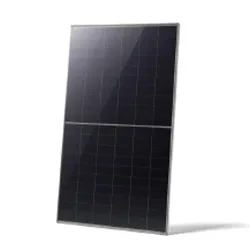Exploring Leading Companies in Solar Panel Manufacturing and Their Innovations
The Rise of Solar Manufacturing Companies A Sustainable Future
In recent years, the world has witnessed a dramatic shift towards renewable energy sources, with solar power emerging as a leader in the transition. As countries increasingly prioritize sustainability and energy independence, the role of solar manufacturing companies has become more critical than ever. This article explores the growth, challenges, and future potential of solar manufacturing companies in the global energy landscape.
Growth of the Solar Industry
The solar industry has experienced exponential growth, driven by technological advancements, decreasing costs, and increasing public awareness of climate change. According to the International Energy Agency (IEA), solar energy capacity has surged in the past decade, driven by innovations in photovoltaic (PV) technology and storage solutions. This growth has led to a boom in solar manufacturing companies, which produce solar panels, inverters, and other essential equipment.
Regions such as Asia, particularly China, have become manufacturing powerhouses, dominating the global solar supply chain. Chinese companies like JinkoSolar, Trina Solar, and LONGi Green Energy are recognized leaders, contributing significantly to the decline in solar module prices. However, as demand for solar energy continues to grow globally, the industry is starting to witness a diversification of manufacturing locations, with companies emerging in Europe, North America, and other regions looking to capture a share of the market.
Challenges Facing Solar Manufacturers
Despite their growth, solar manufacturing companies face several challenges. One of the primary hurdles is the competitiveness of pricing. The global market is flooded with low-cost solar panels, particularly from China, which puts pressure on manufacturers in other regions to reduce their prices without sacrificing quality. This situation can lead to a race to the bottom and has resulted in trade tensions, as countries impose tariffs and anti-dumping measures to protect their local industries.
Another challenge is supply chain disruptions. The COVID-19 pandemic highlighted the vulnerabilities in global supply chains, affecting the availability of raw materials and components necessary for solar panel production. As demand continues to rise, manufacturers must also contend with potential shortages of critical materials like polysilicon, used extensively in solar cells. Companies are investing in developing more sustainable sourcing strategies and exploring alternative materials to mitigate these risks.
solar manufacturing companies

Finally, the rapid pace of technological innovation presents both an opportunity and a challenge for solar manufacturers. Staying ahead of the curve requires substantial investment in research and development, particularly as newer, more efficient technologies are continuously being introduced. Companies that fail to innovate risk being left behind in an increasingly competitive marketplace.
The Future of Solar Manufacturing
The future of solar manufacturing companies appears bright, fueled by a growing global commitment to combating climate change and transitioning to renewable energy. Governments around the world are setting ambitious targets for carbon neutrality, driving investments in solar capacity and infrastructure. Consequently, solar manufacturing is expected to expand, with billions of dollars flowing into renewable energy projects.
Furthermore, as more countries prioritize domestic manufacturing to enhance energy security and reduce reliance on imports, we can expect to see growth in local manufacturing capacities. This trend may lead to the establishment of new solar manufacturing facilities in regions like the United States and Europe, supported by government incentives and subsidies aimed at promoting green energy jobs.
Emerging technologies, such as bifacial solar panels and building-integrated photovoltaics (BIPV), are also set to transform the landscape of solar manufacturing. These innovations not only improve energy efficiency but also broaden the applications of solar technology, opening new markets and opportunities for manufacturers.
Conclusion
Solar manufacturing companies are at the forefront of a renewable energy revolution. As the world shifts towards a more sustainable energy future, these companies play a vital role in providing the necessary infrastructure and technology to harness solar power. While challenges exist, the growth potential for solar manufacturing is significant, presenting opportunities for innovation and investment. With continued support from governments and a commitment to sustainability, solar manufacturing companies will undoubtedly play a crucial part in shaping our energy future.
-
String Solar Inverter: The High-Efficiency Solution for Smart Solar EnergyNewsJul.14,2025
-
Revolutionizing Rooftop Energy with the Power of the Micro Solar InverterNewsJul.14,2025
-
Power Independence with Smart Off Grid Solar Inverter SolutionsNewsJul.14,2025
-
On Grid Solar Inverter: Powering the Future with Smart Grid IntegrationNewsJul.14,2025
-
Monocrystalline Solar Panels: High-Efficiency Power for the Future of Clean EnergyNewsJul.14,2025
-
Bifacial Solar Panel: A Smarter Investment for Next-Generation Energy SystemsNewsJul.14,2025







